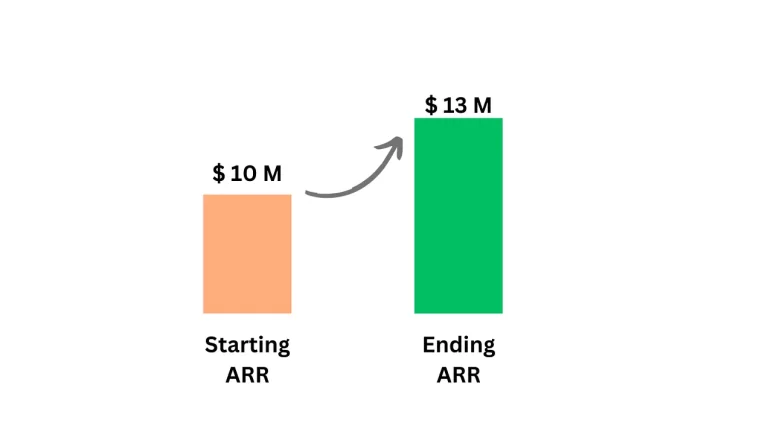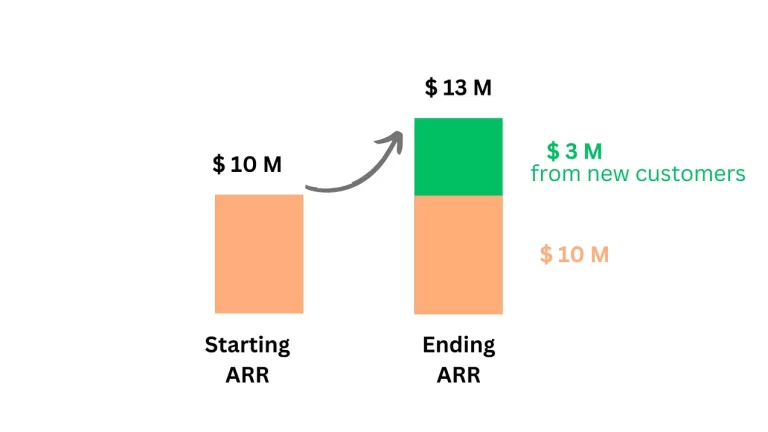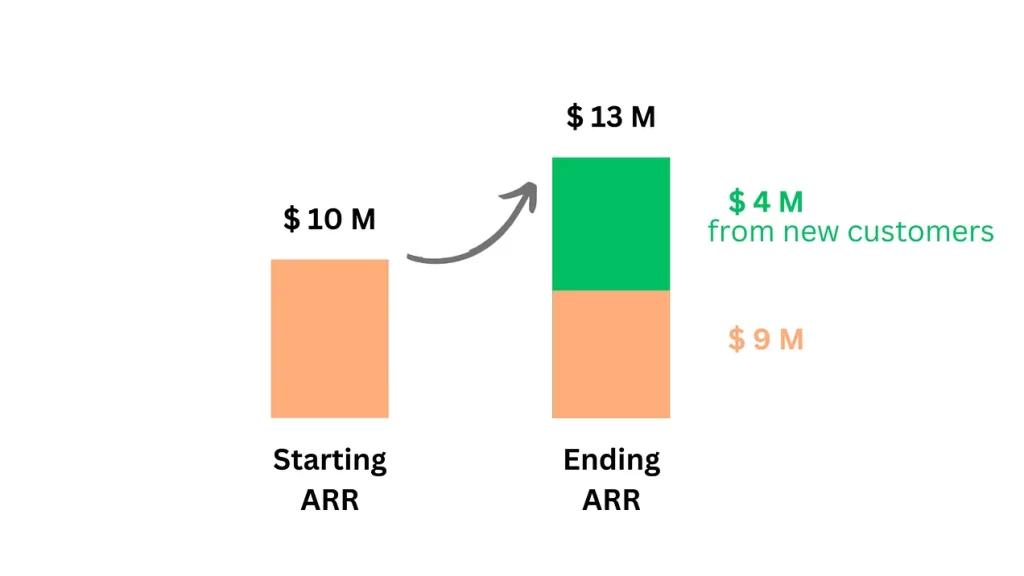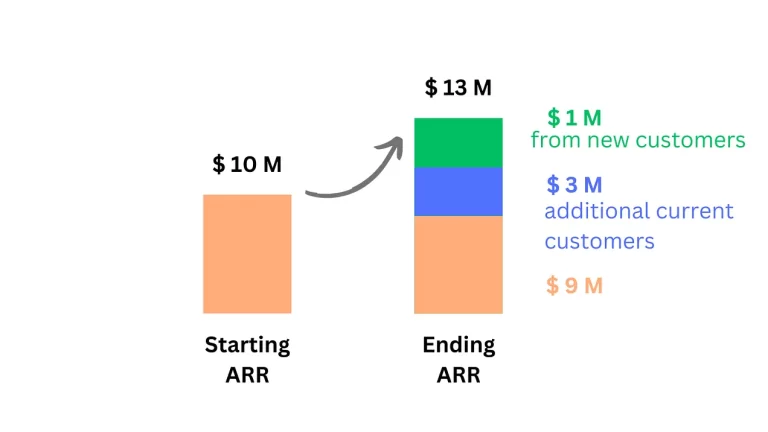How B2B Product Management Drives Business Growth by Improving Customer Retention

In an earlier posts I had discussed the 6 levers of growth that a product manager has at their arsenal. When we say growth, we mean the growth of your business i.e revenue. Which lever is relevant depends on the stage of your company and your competitive position in the market.
In this article, we will focus on one such lever, retention. We will :
understand the importance of retention
identify the root causes of churn
define retention (GRR and NRR)
strategies for PMs to manage retention
Why is retention important?
One of the most important principles in a SAAS business is that acquiring new customers is more expensive than retaining existing ones because it involves substantial upfront costs associated with marketing, advertising, sales efforts, and customer onboarding. These expenses can be significant, especially in competitive markets. In contrast, retaining customers often requires comparatively lower investment as it involves nurturing and maintaining relationships with the customer base you’ve already acquired and ensuring product provides value. Existing customers are already familiar with your product or service, which means they are more likely to make repeat purchases and can provide a steady stream of revenue over time.
Let’s look at it mathematically.
Imagine your company has a target of 30% growth year over year. If your starting ARR (Annual Recurring Revenue) is $ 10 M per year, then by the end of the year ARR should be $ 13 M.


However, during the course of the year, any of the following can happen –
Customers cancel subscription
Customers reduce the usage of your product (e.g. less seats)
Customer downgrade to a lower tier plan
Which means that the existing customers that started out with $ 10 M in ARR will have lower revenue. If churn is say 10%, then the ARR from existing customers will be $ 9 M. Now you have to get $ 4M from new customers to get to $ 13 M and meet your growth target. Getting new customers is costly and will eat up in profitability.

What if churn is 30%?
Then existing customers will bring in $ 7 M, and you will need to get additional $ 6 M from new customers. That’s a worse scenario than the above.
As you can see, retention is extremely important. Retention is the holy grail of SAAS business.
As a PM, your job is ensure that retention remains high. Each industry has it’s own set of retention benchmark. Marketing automation apps typically hover around 70% while CRM/ERP track at 90% and over. Your product should have retention rates similar or higher than your industry.
This is all financial mumbo jumbo. How is this related to my job as a PM?
Your company’s ability to retain customer lies in the product and the experience you provide. Your customers will continue to use your product as long as they get value. As a PM, it is your responsibility to ensure that retention is managed. Whatever level you are in the PM organization, understand the retention rates and be proactive in determining action plans.
There are several things you can do as a PM to manage retention.
Let’s go step by step.
Gross Revenue Retention (GRR)
In our example above, we started with $ 10 M ARR and by the end of the year, ARR from existing customers dropped to $ 9 M. The retention is 90%. This is called gross revenue retention or GRR.
GRR can drop due to any of the following reasons.
Customer cancels subscription – The root causes for this could be :
Product does not meet their needs
Customer goes out of business
They opted to go with a competitor app
Customer profile is not ideal
Customer lowers usage – The root causes for this are :
Customer is facing some business issue and not able to sustain usage levels
Customer is not using the product as much or not needed as much
Customer downgrades their pricing tier – The root causes for this are :
Customer bought a higher tier than needed
Customer does not need high level features
Customer is tightening their spend
A high gross retention means customers are happy and want to keep using your product. A lower gross retention means customers are not finding the product useful. This is where product management need to step in and analysis the root causes. Most of the root causes for churn are in the list above. Narrow down to the reasons that are contributing to the churn.
As a PM, you can do the following to manage retention.
Analyze the customer base and identify pockets of customers who are churning more often. E.g. Overall retention is 90% but a specific type of customer is retaining at 70%. Just managing this type of customer could get you additional retention points.
Analyze past usage patterns of customers who eventually churned. Then look at existing customers with similar patterns and take proactive action before they churn. e.g. customers who use only feature churn more than those use 2 or more features in your product. Or, customers in Asia churn more etc.
Map the customer journey and the onboarding process, and identify any paths that are causing friction. Work with customer success to make sure that onboarding is smooth, and the customer gets to the aha moment sooner in their onboarding. The fast the customer realizes value, the better they retain.
Make sure that your ICP is well defined and that sales and marketing are able to attract customers who fit that profile. Otherwise, sales may close a deal with a non ideal customer, but they will not retain.
Make sure your feature sets and pricing tiers are well aligned, so that customer get the value for the tier they are paying for.
Watch the competition and ensure they are not stealing your business. Sometimes you don’t have to add a feature to combat competition, it could just be a change in your messaging and positioning.
As you can see, there are many ways you can help as a PM to manage retention from existing customers.
There is another strategy that can help manage retention.
Net Revenue Retention (NRR) In our example above, we started with $ 10 M ARR and by the end of the year, ARR from existing customers dropped to $ 9 M. However, any of the following can also happen during the year.
Customer add new users or new usage to the product
Customers upgrade their pricing tiers
Customers buy addon products from you
Customer buy a separate product from you
Let’s say existing customers added a net total $ 3 M from any of the above reasons.
Now the ending ARR will be $ 12 M ($ 9M + $ 3M). The retention is 120%. ($ 10 M to $ 12M) This is called Net Revenue Retention. Sometimes also called NRD (Net Retention Dollar).

In order to meet our target of $ 13M, we only have to get $ 1M from new customers. This is much better scenario than trying to get $ 3M.
A NRR > 100% means the overall base is expanding for future growth. If NRR<100% it means your base is not growing and eventually your ARR will shrink. Which means you will acquire additional new customers.
A high net retention means customers are happy and want to keep not just using but expanding your product in their organization. This is a good sign that your product and messaging both are working.
As a PM, you can do the following to increase expansion revenue.
Increase usage – Expand use cases for your product across your customers organization. Let’s say you have a product for sales people, maybe you can add dashboard and reporting for executives which would require additional subscriptions. Or let’s say you have an AI App for content marketers, then you could expand the uses to HR content. This requires a PM to understand adjacent use cases that can be easily sold to customers.
Upgrade – Find segments of customers who are ready to be upgraded. Typically, these are customers who have been onboarded for over a year, getting value and using the product increasingly. You could have a higher tier package that offers more features that will fit this type of customer.
Create new add ons -Creating add ons is a good way to create revenue from existing customers. Add ons typically work on top of the core product the customers are already using. When I was at SugarCRM, I created a product called Sugar Hint which would need to be installed on top of the platform as an add on. This was sold to the sales persona, and allowed us to get some additional revenue.
Create new products – When a company has started penetrating the market with one product, it becomes increasingly difficult to grow. The strategy then is to add a new product. The new product provides a new set of value proposition, possibly to a new set of users. SugarCRM was primarily a sales tech application. We created a new product Sugar Serve which was targeted to customer service users. This was a different product that customers could buy standalone.
In the early stages of a startup, you are likely focused on Gross Revenue Retention. Once you have the structure and processes in place to maximize your GRR, you need to focus on Net Revenue Retention. The expansion that your existing customers provide today, becomes the starting ARR for next year. Then new customers this year, will contribute to expansion revenue next year at a much lower cost than acquiring brand new customers. And this effect compounds.
Summary
Monitor GRR and improve product and experiences for existing customers. Monitor NRR for expansion opportunities from existing customers.
As a PM, you won’t be going it alone in your mission to boost retention. Teams like Customer Success, Account Management, and Support all have roles to play in this endeavor. Many of the tasks I’ve discussed, such as refining onboarding processes or swiftly guiding customers to value, may indeed involve collaboration with others.
However, it’s essential to understand that retention is not exclusively the responsibility of the Customer Success team. As a PM, your role is pivotal in understanding the root causes of churn, resolving friction points, identifying new use cases, and even envisioning new products. It’s far from accurate to suggest that retention is solely within the domain of Customer Success. Product Managers are instrumental in driving this essential growth imperative. By ensuring the satisfaction and loyalty of our existing clients, we, as Product Managers, hold the power to not only boost revenue and cut costs but also gain priceless insights and forge enduring brand loyalty.

